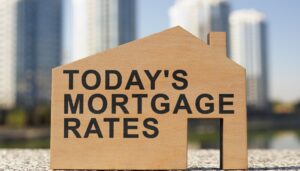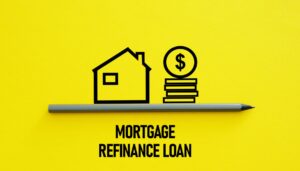The standout news for today's mortgage rates is that the average 30-year fixed mortgage rate has dipped to 6.06%, hitting a yearly low according to Zillow. This rate hasn't been this low all year, with the last time being in late October. For many, this could be the perfect moment to lock in a favorable rate before the year wraps up, potentially saving you a significant amount over the life of your loan.
It’s not daily that you see the 30-year fixed mortgage rate drop to such a compelling level, especially this late in the year. It’s a genuine opportunity, and one that many buyers have been waiting for. While we can't predict the future with 100% certainty, a rate around 6.06% for a 30-year fixed loan presents a strong case for moving forward with a purchase or refinancing.
Today's Mortgage Rates, November 25: 30-Year FRM Drops to Lowest Level of 2025
Breaking Down Today's Mortgage Rates
It's always helpful to see the numbers laid out clearly. Here’s a look at the national average mortgage rates as of November 25, 2025, based on data from Zillow:
| Loan Term | Rate |
|---|---|
| 30-year fixed | 6.06% |
| 20-year fixed | 6.06% |
| 15-year fixed | 5.53% |
| 5/1 ARM | 6.16% |
| 7/1 ARM | 6.02% |
| 30-year VA | 5.55% |
| 15-year VA | 5.28% |
| 5/1 VA | 5.09% |
Please remember, these are national averages. Your actual rate might be a bit different based on your credit score, down payment, and lender.
Why the 30-Year Fixed Rate Hitting a Yearly Low Matters
The fact that the 30-year fixed mortgage rate has returned to its yearly low of 6.06% is a big deal. Earlier in 2025, we saw these rates consistently hovering above 6.5% and even creeping higher at times. For a significant loan amount, that difference of even half a percent can add up to tens of thousands of dollars over 30 years.
When someone asks me if it's a good time to buy, I often look at these benchmark rates. A 30-year fixed loan offers stability and predictable monthly payments, making budgeting much easier. For first-time homebuyers, this stability is gold. It means you can plan your finances with a good degree of certainty for decades to come. Seeing this rate at its lowest point means more purchasing power for buyers, or a chance to get a better deal than they might have expected just a few months ago.
Exploring Your Fixed-Term Options
While the 30-year fixed is the most popular for a reason, it’s not the only game in town. Let's look at the other fixed-term options:
- 20-Year Fixed: Interestingly, the 20-year fixed rate is also currently at 6.06%, the same as the 30-year fixed. This is a bit unusual. Typically, a shorter loan term would have a slightly lower rate. In this scenario, you get the benefit of paying off your mortgage 10 years sooner without a rate penalty! This could be an excellent option for those who can comfortably afford the higher monthly payments. You'd pay significantly less interest over time.
- 15-Year Fixed: The 15-year fixed rate is lower still, at 5.53%. This is the traditional route for getting the absolute lowest interest rate and paying off your home much faster. However, the monthly payments will be considerably higher than a 30-year loan. This option is best for borrowers who have strong financial footing and want to be mortgage-free sooner, or those who plan to build substantial equity quickly.
Who benefits most?
Generally, a 15-year fixed is great for those who want to save the most on interest and can manage the higher monthly payments. The 20-year fixed offers a good middle ground, allowing you to pay it off faster than a 30-year but with potentially more manageable payments than a 15-year. The 30-year fixed, especially at this 6.06% rate, is ideal for those prioritizing lower monthly payments for budgeting flexibility or for maximizing their purchasing power to afford a slightly more expensive home.
Adjustable-Rate Mortgages (ARMs): A Different Kind of Calculation
Adjustable-rate mortgages, or ARMs, can be attractive because they often start with a lower interest rate. However, they come with a trade-off: that rate can change over time.
- 5/1 ARM: Today, the average 5/1 ARM rate is 6.16%. This means the initial rate is fixed for the first five years, and then it can adjust annually.
- 7/1 ARM: The 7/1 ARM rate is at 6.02%. This offers a longer initial fixed period of seven years before annual adjustments begin.
In the current environment, with the 30-year fixed rate at a yearly low, ARMs might not be as compelling for everyone. When the initial rate on an ARM is barely lower than, or even higher than, a long-term fixed rate (like the 5/1 ARM at 6.16% versus the 30-year fixed at 6.06%), it’s a sign to be extra cautious. You’re essentially taking on the risk of future rate increases for little to no upfront savings. ARMs can make sense if you plan to sell the home or refinance before the fixed period ends and believe interest rates will remain stable or fall. However, it’s a gamble.
The VA Loan Advantage for Our Heroes
As always, VA loans continue to be a fantastic benefit for eligible veterans, active-duty military personnel, and surviving spouses. These loans, backed by the U.S. Department of Veterans Affairs, consistently offer some of the most competitive rates.
Here’s how they stack up today:
- 30-year VA: 5.55%
- 15-year VA: 5.28%
- 5/1 VA: 5.09%
Look at that! The 30-year VA loan rate at 5.55% is significantly lower than the conventional 30-year fixed rate of 6.06%. That’s a difference of over half a percent! And the shorter-term VA loans are even more attractive. If you're eligible for a VA loan, it's almost always worth exploring, as it can lead to substantial savings and often comes with no down payment requirement and no private mortgage insurance.
Refinance Market Snapshot: Is It Time to Refi?
Refinancing is another area where mortgage rates play a huge role. People refinance for various reasons, most commonly to lower their monthly payments, reduce their interest rate, or cash out equity for other needs.
Here are the current refinance rates from Zillow:
| Loan Term | Rate |
|---|---|
| 30-year fixed | 6.20% |
| 20-year fixed | 6.05% |
| 15-year fixed | 5.64% |
| 5/1 ARM | 6.35% |
| 7/1 ARM | 6.80% |
| 30-year VA | 5.64% |
| 15-year VA | 5.30% |
| 5/1 VA | 5.20% |
Comparing Purchase vs. Refinance Rates:
Notice that, for the most part, refinance rates are slightly higher than purchase rates. For example, the 30-year fixed refinance rate is 6.20%, compared to the 30-year fixed purchase rate of 6.06%. This is quite common. Lenders may price refinances differently than new purchases, sometimes factoring in the existing relationship or perceived risk.
What does this mean for homeowners?
Even with slightly higher refinance rates, a difference of a percentage point or more between your current mortgage rate and the available refinance rate can still make it worthwhile. If you have a rate significantly higher than 6.20% on your current 30-year mortgage, exploring a refinance could still lead to savings. The 15-year fixed refinance rate at 5.64% is also quite competitive, especially when compared to rates we saw even a year or two ago.
Related Topics:
Mortgage Rates Trends as of November 24, 2025
Mortgage Rate Predictions for the Next 30 Days: Nov 10 to Dec 10, 2025
Mortgage Rates Predictions for the Next 12 Months: Nov 2025 to Nov 2026
Mortgage Rates Predictions for Next 90 Days: October to December 2025
What’s Influencing Today's Rates?
Mortgage rates are like a sensitive chameleon, changing colors based on a variety of economic factors. Here’s what I’m keeping an eye on:
- Economic Reports: This week's economic news, including reports on inflation, retail sales, and consumer confidence, will be crucial. If these numbers come in weaker than expected, showing a slowdown in the economy, it typically pushes mortgage rates down. Lenders see less economic activity as a signal to make borrowing cheaper. Conversely, strong economic data can lead to higher rates.
- Federal Reserve Policy: The Federal Reserve holds a lot of sway. Their next major announcement is scheduled for December 10, 2025. The market is divided on whether they will cut interest rates again or keep them steady. Any change in the Fed’s overnight lending rate can ripple through to mortgage rates. I, for one, am watching very closely to see if they signal a more dovish (rate-cutting) or hawkish (rate-holding/raising) stance.
- Market Sentiment: Beyond the hard data, there’s overall market mood. If investors feel uncertain about the economy, they often move their money into safer assets like government bonds, which can indirectly lower mortgage rates. If confidence is high, money flows out, and rates can rise.
Looking Ahead: What to Expect
Right now, the market seems to be in a holding pattern of sorts, with rates at a yearly low but not plummeting. My take is that we're likely to see continued modest easing through the rest of November. However, don't expect a dramatic freefall.
The real inflection point, the moment that could truly shift things, will likely come in early December. This will be heavily dependent on the Federal Reserve’s decision and how financial markets interpret the incoming economic data leading up to and immediately following that announcement.
For now, while these 6.06% rates for a 30-year fixed mortgage are fantastic, it’s always wise to have your finances in order. Getting pre-approved, understanding your credit score, and comparing offers from multiple lenders are still the best steps you can take, regardless of where rates ultimately land. This dip is a gift, so take advantage of it wisely!
Beat Inflation & Retire Early with Turnkey Rentals
Turnkey real estate offers powerful tax benefits, monthly cash flow, and long-term equity growth—ideal for early retirement planning.
Norada Real Estate helps you invest in inflation-resistant markets with strong rental demand and built-in tax advantages like depreciation and 1031 exchanges.
🔥 HOT NEW LISTINGS JUST ADDED! 🔥
Talk to a Norada investment counselor today (No Obligation):
(800) 611-3060
Also Read:
- Mortgage Rates Predictions Backed by 7 Leading Experts: 2025–2026
- Mortgage Rate Predictions for the Next 3 Years: 2026, 2027, 2028
- 30-Year Fixed Mortgage Rate Forecast for the Next 5 Years
- 15-Year Fixed Mortgage Rate Predictions for Next 5 Years: 2025-2029
- Will Mortgage Rates Ever Be 3% Again in the Future?
- Mortgage Rates Predictions for Next 2 Years
- Mortgage Rate Predictions for Next 5 Years
- Mortgage Rate Predictions: Why 2% and 3% Rates are Out of Reach
- How Lower Mortgage Rates Can Save You Thousands?
- How to Get a Low Mortgage Interest Rate?
- Will Mortgage Rates Ever Be 4% Again?




